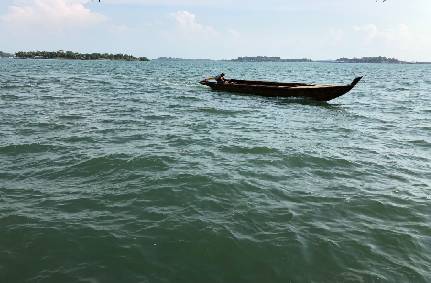What is the daily maintenance of outboard motors? Let's take a look with boatmates and 2 Stroke Outboard Machine Manufacturers.
1. Inspection and maintenance
Before each use of the Outboard Motor for Boat, check whether the emergency flameout rope switch can stop the engine flameout. Visually inspect the fuel system for signs of deterioration or oil leakage. Check whether the outboard motor has been reliably fixed on the stern. Check whether the camel handling system is tangled or lose parts. Visually inspect whether the fasteners of the stalk-operated linkage are securely fastened. Check the propeller blades for damage.
After each use, drive-in saltwater or sewage to flush outboard engine cooling system. If driving in salt water, wash all the salt and rinse the vents on the propeller and gearbox with clean water. Every 100 hours of operation or once a year (whichever comes first).
Lubricate all lubrication points, such as running in saltwater, should increase the frequency of lubrication. Check and clean the spark plug. Check the engine fuel filter for dirt and impurities (carburettor type). Replace the water diversion fuel filter (EFI type). Check the wear of the protective anode; if operating in saltwater, the frequency of inspection should be increased. Drain the original lubricant in the gearbox and replace it with a new lubricant; lubricate the spline of the drive shaft. Check the power trim working fluid. Check the battery. Adjust the carburettor (if necessary). Check the engine timing setting. Check the adjustment of the control cable. Use engine power cleaner to remove engine fouling. Check the tightening of bolts, nuts and other fasteners. Replace the impeller of the water pump (in case of over temperature or insufficient water pressure, it should be replaced in advance).

2. Treatment of Outboard Engine after falling into the water
If the outboard motor accidentally falls into the water (it can be divided into freshwater and seawater) during use, its internal parts are very easy to damage. Therefore, it is necessary to reset the engine as soon as possible and tow the vehicle to shore for maintenance. First, conduct a preliminary inspection of the outboard engine of the ship. You can first remove the spark plug and turn the flywheel to see if the engine crankshaft can rotate freely. If the engine crankshaft can rotate freely, you can carry out further inspection and maintenance; if the engine crankshaft cannot rotate freely, it means that the internal parts of the engine have been damaged. The engine is no longer usable and needs to be repaired.
3. If the outboard motor as a whole falls into freshwater, the steps for further inspection and maintenance are:
Reset the outboard engine. Remove the top cover. Rinse the outside of the engine with clean water to remove mud, weeds, etc. If sand particles are found in the power components, the engine parts may be damaged. In this case, the engine must never be restarted. Remove the ECU from the engine and drain the water of the MAP sensor hose as much as possible. When the hose is not removed from the ECU, place the ECU in the thermostat and dry it at 50 degrees Celsius for about 2 hours. Test the ECU with an electronic fuel injection tester to see if the test reading meets the requirements.
Remove the spark plug, place the engine horizontally, with the spark plug mounting hole facing down, slowly turn the flywheel, and try to drain the water in the power assembly. Reverse the engine, pour ethanol into the cylinder from the spark plug installation hole, and then slowly turn the flywheel to clean the power components. Fill each cylinder with 20-30 ml of engine oil, and then slowly turn the flywheel to further clean and lubricate the power components.
Remove the fuel inlet hose of the electronic fuel pressure pump and drain the fuel/steam separator. Remove the fuel rear filter and the water separating fuel filter to remove all sand and debris. Remove the air intake tube cover and turn the engine so that the air intake squeeze tube is facing upward. Fill each reed assembly with 20-30 ml of engine oil, and then slowly turn the flywheel to further clean and lubricate the reed assemblies. Blow-dry all wires and electrical components with compressed air.
Maintain the engine starter motor. Install the dried spark plug. Add the newly configured fuel and start the engine test.
Copyright:@2020-2021
Comments Please sign in or sign up to post.
0
0 of 500 characters used